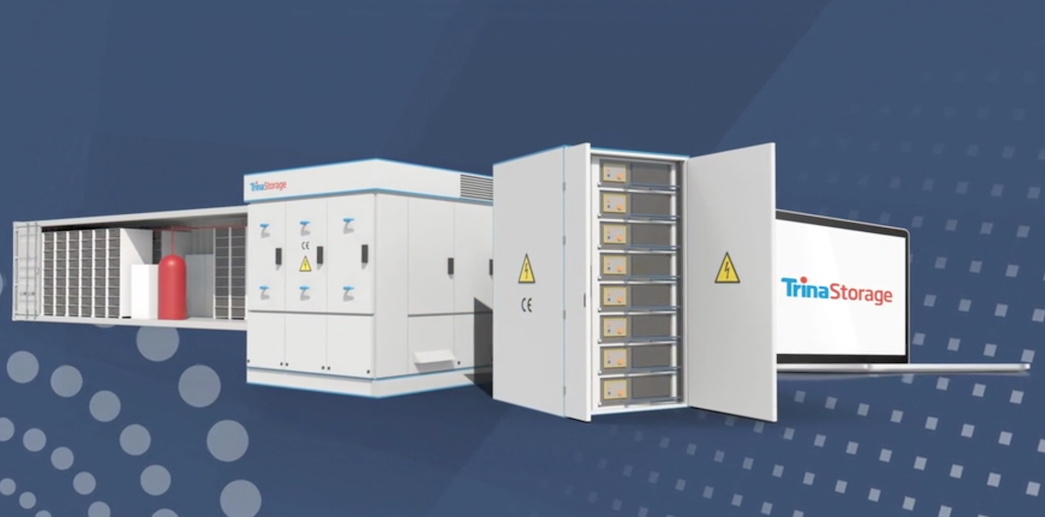
Update 2 March 2021: A Trina Storage representative contacted Energy-Storage.news to highlight that while the company is building out production capacity for lithium iron phosphate (LFP) battery cells for stationary energy storage, the major focus of the newly-launched division is on providing full integrated battery energy storage system (BESS) solutions to the renewables and grid storage markets.
Vertically-integrated solar PV company Trina Solar has officially launched Trina Storage, a “dedicated business division” for energy storage solutions.
Enjoy 12 months of exclusive analysis
- Regular insight and analysis of the industry’s biggest developments
- In-depth interviews with the industry’s leading figures
- Annual digital subscription to the PV Tech Power journal
- Discounts on Solar Media’s portfolio of events, in-person and virtual
Trina Solar is one of the biggest PV module providers in the world — ranked as part of the elite ‘Solar Module Super League’ of manufacturers by our sister site PV Tech. The China-headquartered group is targeting reaching >50GW of total solar module assembly capacity by the end of this year and is currently building multi-gigawatt ’Super Factories’ in three Chinese cities for the production of its newer line of 660W+ and 550W panels, called Vertex.
To that, the company has already added a factory making lithium iron phosphate (LFP) battery cells which will reach 3GWh production capacity by the end of 2021, Terry Chen, Trina Storage’s head of overseas energy storage business, said yesterday in a sponsored presentation at the Energy Storage Summit 2021, hosted by our publisher Solar Media. The factory will make LFP batteries for the stationary energy storage market only.
This is part of a strategic move for the solar manufacturer to create a similarly vertically-integrated approach to the “booming” global energy storage market, with a focus on utility-scale market segments. Terry Chen said the division is geared towards providing a “competitive solutions platform” using leading batteries, power conversion systems (PCS) and controls and battery management systems (BMS), with Trina set to continue investing in R&D in those areas.
The overall strategy therefore is to create an “energy solutions provider, not an integrator or manufacturer”, and Trina Storage will select or develop its own top-tier products to integrate into battery systems. While a major focus is expected to be the utility-scale solar-plus-storage market, by creating a modular, multi-purpose solution configurable to different applications the company should be able to achieve economies of scale “even with diversified [customer] demands,” according to Terry Chen.
The group is launching into the US, Europe and APAC regions initially this year, establishing front-end local teams and offices in each region, while it will consider expansions into other global territories based on how market demand develops, “step-by-step,” Chen said.
Chen introduced Trina Storage’s first announced UK project for the new business division; a 50MW / 56.2MWh system being delivered for SMS PLC, a smart energy company which has begun building a portfolio of utility-scale battery storage projects. The solution includes 151 x 372kWh battery racks with 15 x 3.8MVA PCS and 3.8MVA transformers.
That system, in Cambridgeshire, east England, is being designed to provide multiple services including ancillary grid services for frequency response, including firm frequency response (FFR) and the recently-introduced Dynamic Containment market. It will also play into the UK grid’s Balancing Mechanism for matching supply with demand on the network and can also earn revenues through wholesale market arbitrage.
Along with the group’s 20 years+ of experience in the solar sector, Terry Chen said that among key differentiating factors for Trina Storage are the bankability of the company and its products, solutions and services. For SMS’s Cambridgeshire project, Trina has offered the customer a 10-year full service package, including a 98% system availability warranty and a flexible capacity warranty for an average 2C/day charge and discharge for up to 4 cycles per day.
The launch marks Trina Solar’s return to the energy storage market after the short-lived launch in 2016 of a subsidiary called Trina BESS which was later spun out. Terry Chen said at yesterday’s Energy Storage Summit that the company is now responding to strong demand from utility markets for battery storage. Meanwhile, another Chinese ESS provider, Pylontech, said a few days ago that it is also building out a multi-gigawatt stationary storage factory complex dedicated to LFP chemistry-based solutions.
In related news, US-headquartered clean tech solutions provider Pacific Green Technologies this week announced a Memorandum of Understanding (MoU) with a joint venture (JV) company formed by two Chinese companies, Shanghai Electric Group and lithium battery maker Guoxuan High-tech Co. Under the terms of that framework agreement, Pacific Green’s subsidiary, Pacific Green Energy Storage Technologies, will seek out global opportunities to develop battery storage projects with Shanghai Electric Gotion New Energy Technology (SEG) manufacturing and supplying battery energy storage system technology solutions.
The Energy Storage Summit 2021 continues today, 24 February and returns on 2,3 March. See the website for more details.






